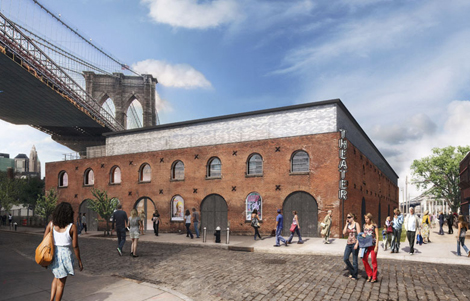Designs unveiled for theater at Tobacco Warehouse in Brooklyn
St. Ann’s Warehouse to fit inside landmark under bridge

b-St-Anns-Warehouse-Theater1_Rogers-Marvel-.jpg
Jonathan Marvel of Rogers Marvel Architects presented to a Community Board 2 subcommittee Thursday night a set of renderings for St. Ann’s Warehouse, a theater to be built inside the landmarked Tobacco Warehouse in Brooklyn Bridge Park.
According to the Curbed blog, the design calls for an 18,000-square-foot building with “a flexible performance space” and a “view corridor” looking out at the park and the water.
